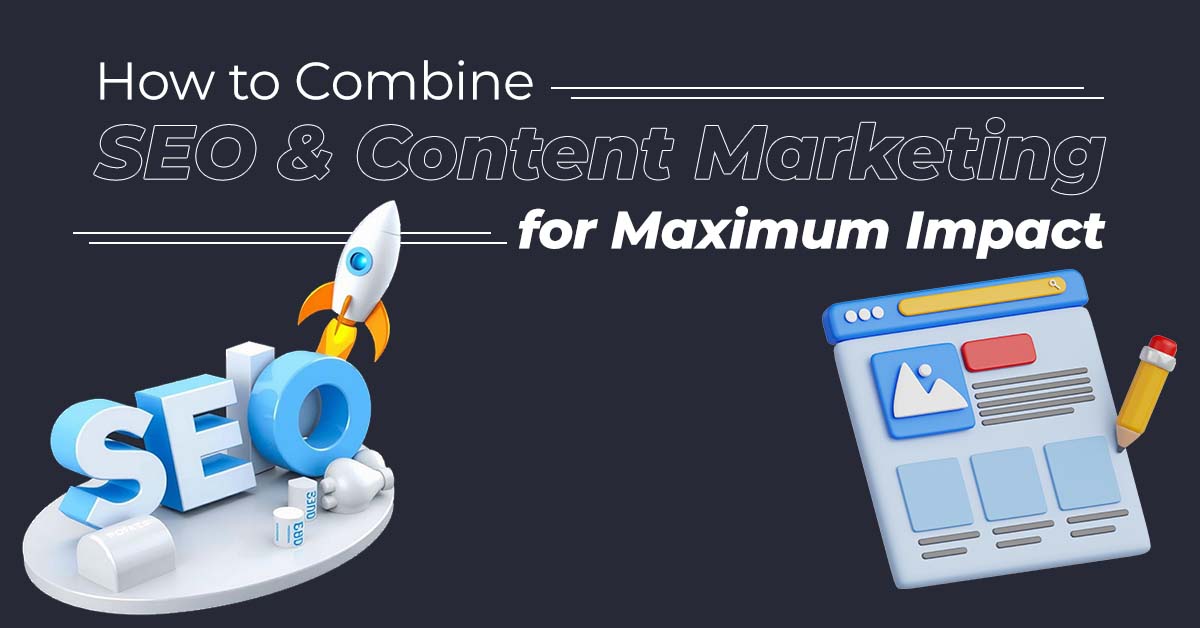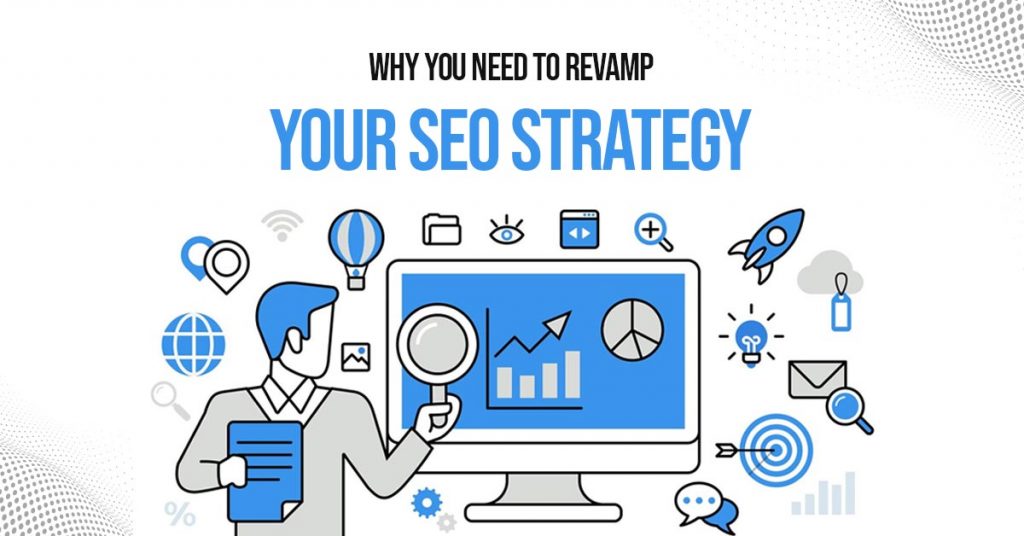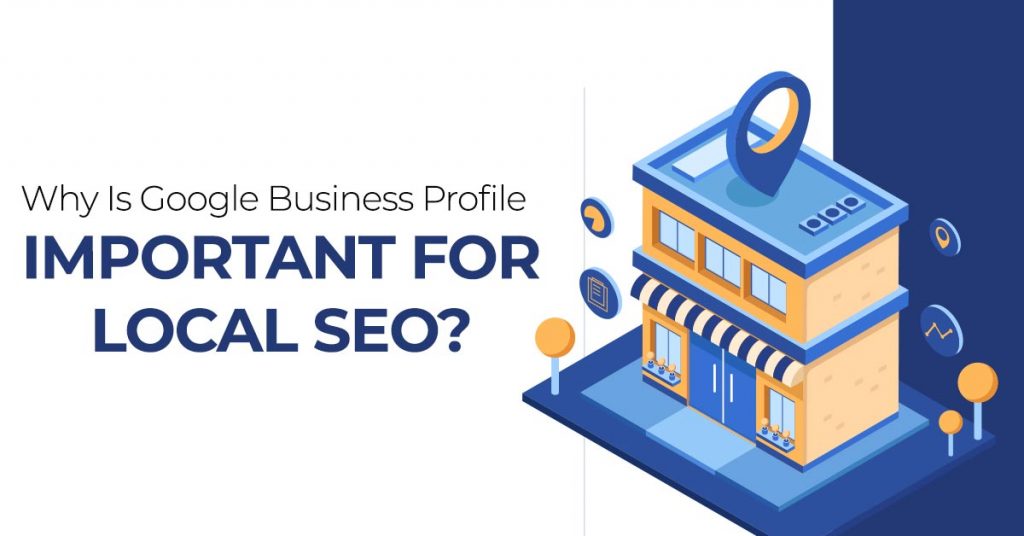At Infinix 360, we view SEO and content marketing as two parts of the same system. SEO ensures that a brand’s content is found; content marketing ensures that it’s worth finding. When keyword strategy, topic research, and distribution work together, visibility and engagement grow in measurable ways. We aim to deliver content that attracts the right audience and converts their interest into action. Our approach, refined through the Best SEO Services in Sydney, focuses on linking data-driven SEO planning with purposeful content execution to build long-term authority and consistent organic growth.
Understanding the Connection Between SEO and Content Marketing
SEO and content marketing are part of the same workflow. SEO helps people reach the content. The content itself decides whether they stay, read, or respond. When either side is handled in isolation, the results don’t hold for long.
A well-structured SEO content marketing strategy starts with how people search and what they expect to find. It connects that search intent with the brand’s message and the topics that matter in the market. In every project, content optimization for SEO means checking the basics such as clarity, relevance, headings, and links so that a page reads naturally and still meets search requirements.
The goal isn’t to please algorithms; it’s to make useful content easier to find and easier to trust.
Start with Strategic Keyword Research
Keyword research isn’t just about pulling a list of popular terms. It starts with asking what people want to know and what stage they’re in when they search. High-volume keywords show general interest, but long-tail phrases tell you what someone is ready to act on. Both are needed, but in different proportions depending on the goal. Tools like Google Keyword Planner, SEMrush, or Ahrefs only help once you already understand intent. For creative content for SEO, the intent decides the subject, tone, and structure. That’s what makes SEO and content marketing work together instead of running on separate tracks.
Build a Content Plan Around Search Intent
Before creating content, keywords need to be sorted by what the user is trying to do. Informational searches belong to people looking for answers, so they fit well with blogs or how-to articles. Navigational searches usually lead someone toward a brand or service page. Transactional terms work best on landing pages designed for action. Treating them all the same weakens the message.
A strong SEO content marketing strategy connects these layers so readers can move naturally from learning to deciding. Through content optimization for SEO, each piece is adjusted for clarity, headings, and links that guide the user forward. Consistency matters more than frequency; content should appear when it adds value, not just to fill a schedule.
Optimize Content Structure and On-Page Elements
A page that isn’t organized won’t perform, no matter how good the idea is. Structure comes first. Headings must tell the story on their own. Paragraphs should be short enough to scan but detailed enough to hold attention. Internal links guide both users and crawlers through related topics. Meta titles and descriptions aren’t decoration; they decide whether someone clicks or scrolls past.
In creative content for SEO, small choices such as where a keyword sits, how an image is named, or how a line breaks affect visibility. That is the real link between SEO and content marketing. The words do the talking, but the structure makes them work.
Create Value-Focused, Shareable Content
A good piece of content garners attention only if it has something valuable. Readers are searching for an answer or some clarity, and not a reiteration of what they already understand. Each document for a particular audience must have a specific objective, such as solving a problem, an illustrative explanation of a particular concept, or assisting in arriving at a particular conclusion. This is what makes it shareable.
Data, case examples, and practical insights add weight to a message. Visuals or summaries help people absorb it faster. For SEO and content marketing, value replaces volume. A few well-researched, well-written pages perform longer than a large set of shallow articles. The goal is to create information that people save, cite, or return to when they need a reliable source.
Strengthen Authority with Backlinks and Content Distribution
Authority doesn’t come from publishing alone. It builds when other credible sources point back to your work. A single link from a trusted site is worth far more than a list of weak mentions. The focus has to be on fit, where the link sits, how it’s used, and whether it adds value to the reader.
A workable SEO content marketing strategy includes this step from the start. You decide how each piece will travel once it’s live. Some go through outreach. Some are updated later to link with new insights. Continuous content optimization for SEO keeps old pages useful, which makes them easier to reference again. Over time, that is what strengthens a reputation.
Measure, Analyze, and Refine Your Strategy
No SEO plan works on guesswork for long. You have to look at what people do with the content once they find it. Which pages they stay on, which ones they leave fast, and what keywords bring them in. Those numbers show what connects and what doesn’t.
With creative content for SEO, the review isn’t about traffic alone. It’s about intent. If visitors read through and act, the message fits. If they drop off early, it needs rework. Checking analytics, search data, and engagement patterns gives direction for the next round. Strategy improves by reading what the audience has already told you through their actions.
Common Mistakes When Combining SEO and Content Marketing
Many teams handle SEO and content separately and lose the link between the two. The first mistake is writing for algorithms instead of readers. Overuse of keywords or forced phrasing makes content hard to trust. The next is skipping intent, publishing topics that draw traffic but serve no purpose for the business.
Inconsistent updates are one more issue. Search engines value accuracy, and old or thin pages pull down overall credibility. Ignoring performance data is equally costly. When results aren’t reviewed, the same errors repeat. A well-balanced approach treats SEO as the structure and content as the message. Both need equal attention to work.
Conclusion
At Infinix 360, we don’t treat SEO and content as separate jobs. One supports the other. SEO brings the audience to the page; the content decides if they stay and act. That’s the balance we build into every project we handle.
At our content marketing agency in Sydney, we take the simple approach – plan, clear, update as needed. It isn’t noise or spikes in the numbers that is the goal; it is steady, growing over time. It has worked for us and the brands we work with.




